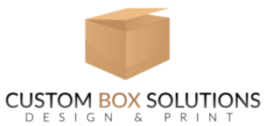Make Paper Boxes on Your Own
Paper boxes are a fantastic, environmentally-friendly option for creating gifts, trays, and storage containers. Regardless of the paper size, you can fold it into a variety of shapes to make a paper box. This is a great way to reuse old flyers and discarded paper. Custom Box Solutions offers a broad range of custom paper boxes that not only protect your product but also give it a trendy and stylish appearance. These boxes are designed to appeal to your target audience and enhance your brand identity. With various shapes, sizes, and designs available, selecting the perfect one for your needs is easier than ever. Investing in such customized paper boxes can leave an everlasting impression on your customers and enhance your sales.
Creating a Rectangular Custom Paper Box
Select Suitable Paper
For this method, it’s best to use rectangular paper. If you’re making a gift or a party favor, try using brightly colored and/or patterned paper. On the other hand, if you’re just practicing your paper folding skills, you can use some scrap paper instead.
Vertical Folding
When working with patterned paper, it is important to ensure that the pattern is facing outwards. Once you have done this, unfold the paper and make sure that each fold is creased properly. You can use your fingernail, a coin, or any other small, hard object to crease the folds. In case you are using thicker paper like cardstock, you can employ a scoring tool such as a dull knife, an empty ballpoint pen, a bone folder, or an embossing tool to create the creases.
Side Folding
Take the edge of the paper and line it with the center crease. Once again, make sure the pattern is on the outside. Then, unfold the paper. It should now be sectioned into quarters widthwise.
Lengthwise Folding
Make sure that the design pattern is facing outward. Then, unfold the paper once again to divide it into eight equal sections to make custom paper boxes.
Corner Folding
Now, you need to repeat the same process you did in side folding with the newly created center crease. This will create four sections on each side, resulting in a total of 16 sections. However, this time, you should not unfold the paper.
Triangular Folding
Next, align the corners with the nearest center crease. The folded corners should create right triangles, with their bases in line with the center crease. This will result in an uneven octagonal shape. Eventually, you should see a strip of paper between the edge of the newly folded corner and the center creased edges, which creates a flap.
Flap Folding
To reveal the center crease inside the box, you need to open the center of the paper by folding the paper flap. This flap will be visible from outside the box. If you want to enhance your custom paper box appearance, consider using two-sided patterned paper.
Box Formation
To hold the box, grip the creases in the middle. Once all the folds are made, you should have a complete box. You might need to refold some of the folds to make your box more stable.
Finishing Touches
To ensure the corners sit flat, use some scotch tape. Plus, you can decorate the inside of the box using markers or pens. If you are using the box for gifting purposes, consider writing a surprise message to your recipient that the item will cover.
Creating a Square Custom Paper Box
Paper Selection
When making a box, it’s important to consider its purpose. If it’s meant to be a gift or a decorative item, you can use patterned or colored paper. For this method, you’ll need square paper. Origami paper is a great choice for a gift box. Make sure your paper is even on all sides. You can use square paper or measure and cut the paper to make each side the same size.
Diagonal Folding
If you’re using patterned paper, ensure the pattern is inside. Then, turn the paper up to 90 degrees and repeat this step. This will divide the paper into four sections.
Corner Folding
Start with the patterned side of the paper facing down. Fold each corner to the center of the paper to reveal the pattern side of the paper. The plain side should now be covered up. You should now have a smaller square made up of four identical triangles.
Edge Folding
Fold the newly created sections on top of the corner folds. This will turn the paper for custom paper boxes into a rectangular shape, with only two rectangular flaps visible at the center.
Additional Folding
The next fold should be made over the ones created in Step 4, creating an even smaller square. At this point, only two rectangular flaps should be visible.
Partial Unfolding
Rotate the paper and stop unfolding once you see the square of triangles. Take two parallel edges and fold them back towards the center on the already creased fold. These edges are identical, so there’s no need to create a new fold. The edges should sit vertically, as they will be the sides of your box.
Lifting and Unfolding
Gently unfold one shorter end of the rectangle, being careful not to tear the paper. If any edges aren’t crisp, re-create them. You should now have three outwards-facing triangles, two of which have a central crease. Each triangle base forms three sides of the square that will make up the next side of your box.
Triangle Folding
To create your custom paper boxes, take the central creases of the paper and invert the triangles by pinching them together and pushing them down. Then, push inward on the creases and align the triangles against the central crease of the new side. This should start folding the paper and lifting the new side up. The base of the last triangle will create the crease for the inner lower edge of this side. Once folded in, the last triangle should now be in the bed of the box, forming a square with three other identical triangles.
Completing the Box
All four triangles should fit accurately into the bottom of the box, creating a square bed that looks like the one made up of four triangles. If you want the triangles to remain flat, you may need to use tape to secure them.



